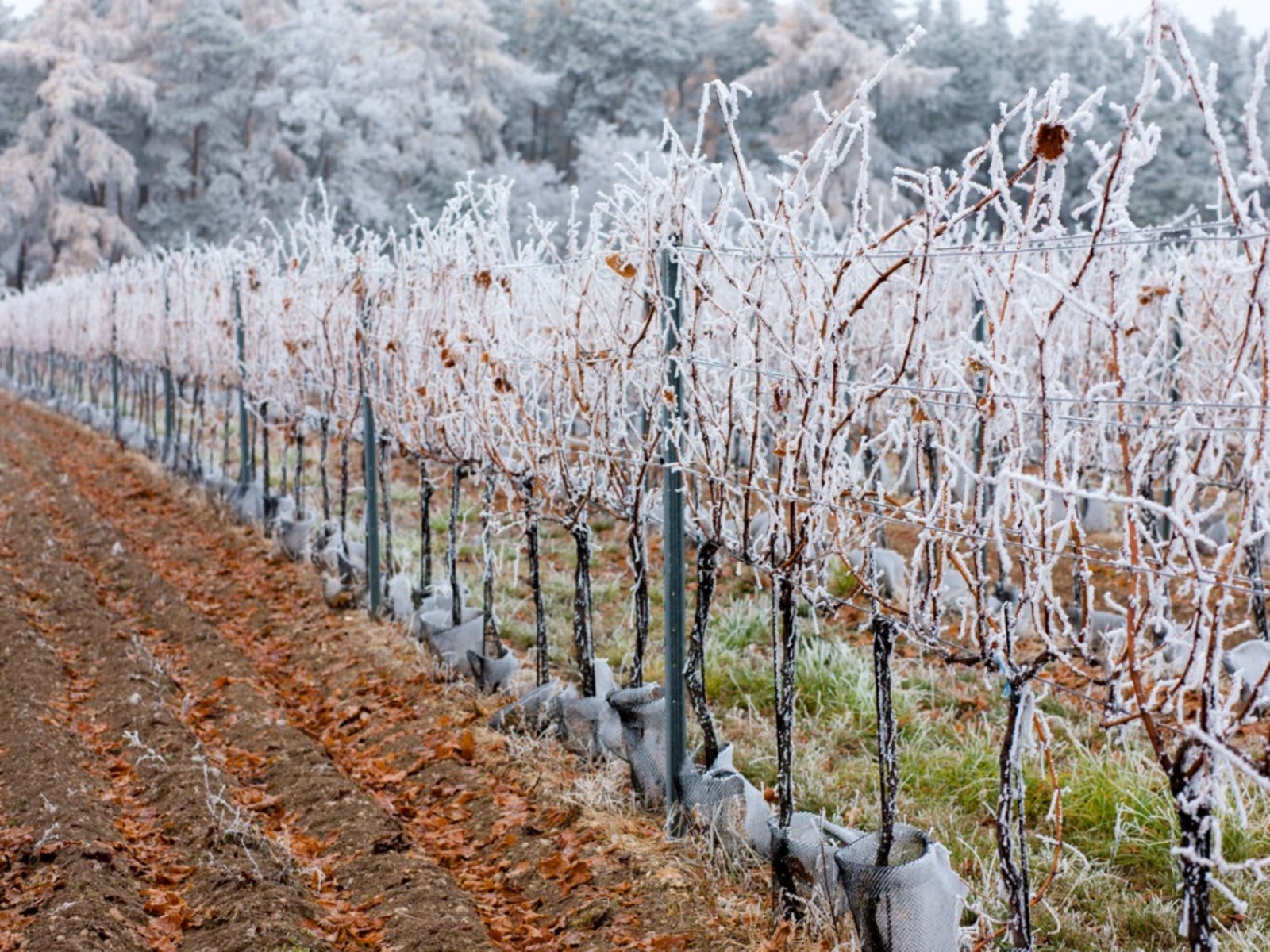Overwintering Grapes: How To Prepare Grapevines For Winter


Grapevine winter care involves the addition of some type of protective covering and proper pruning, especially in colder regions. There are also hardy grape varieties that require little to no upkeep. Learning how to winterize grapevines and how to care for grapes in winter isn't difficult. However, learning about overwintering grapes can be crucial to the health of your vines.
How to Prepare Grapevines for Winter
There are a number of protection methods for overwintering grapes. Choosing a variety hardy to your area is one of the most important things you can do to ensure their survival.
In cold climates, grapevines are generally covered with about 8 inches (20.5 cm.) of mounded soil. Extremely cold regions should also add some insulating mulch such as straw or shredded cornstalks (which are more water-resistant). The addition of snow in these areas provides adequate insulation for protecting vines. Areas with little snowfall should cover vines with at least a foot or two (30.5-61 cm.) of soil.
Since mounded soil above ground can still get quite cold, some grape gardeners prefer using other methods, like deep ditch cultivation. With deep ditch cultivation, ditches are about 4 feet (1 m.) deep and 3 to 4 feet (around 1 m.) wide. The vines are actually planted within the ditch and then the soil is added as they grow. While this method takes much more time to fully fill the ditch, it provides adequate winter protection.
Another method that can be used in less frigid regions involves the use of shallow trenches. Dormant grapevines are carefully removed from their support structures and lightly wrapped in old blankets or burlap. They are then placed into a slightly sloped trench lined with sand. Another protective covering is placed on top along with a layer of black plastic or insulating fabric. This can be anchored into place with soil or rocks. Once spring arrives and buds begin to swell, the vines can be uncovered and reattached to their support structure.
Pruning Care for Grapes in Winter
While pruning can be done in early spring, the ideal time for pruning your grapevines is during late winter, while the vines are still dormant. Trimming the buds at the end of the vines stimulate new growth. This is why pruning too early can become a problem. You don't want new growth to get cold-damaged. As new vines begin to grow, prune them back. In fact, a hard pruning is usually best. You want to remove as much of the old wood as possible. Don't worry, they will come back readily.
Gardening tips, videos, info and more delivered right to your inbox!
Sign up for the Gardening Know How newsletter today and receive a free copy of our e-book "How to Grow Delicious Tomatoes".

Nikki Tilley has been gardening for nearly three decades. The former Senior Editor and Archivist of Gardening Know How, Nikki has also authored six gardening books.
-
 Looking For Plants To Give You The Soft And Fuzzies? Try These 5 Fuzzy Leaf Plant Options
Looking For Plants To Give You The Soft And Fuzzies? Try These 5 Fuzzy Leaf Plant OptionsLovers of texture, drama, silver foliage and tactile plants will adore these special sensory garden additions. These fuzzy leaf plant options will leave you all aglow
By Susan Albert
-
 Get Ready For A Summer Of Hummers! Grow These Full Sun Hummingbird Plants and Flowers
Get Ready For A Summer Of Hummers! Grow These Full Sun Hummingbird Plants and FlowersIf you’re lucky enough to enjoy a sunny backyard, make sure you are maxing out on your pollinator opportunities and grow these full sun hummingbird plants and flowers
By Tonya Barnett